auslistings.org
A well-established growth hub for Australian businesses
★ Get your own unique FAQ + Selling Points on your profile page
★ be seen by 1000s of daily visitors and win new business
auslistings.org Ephemeral Miniblog
Spruiker: The Lost Art of the Loud Sell
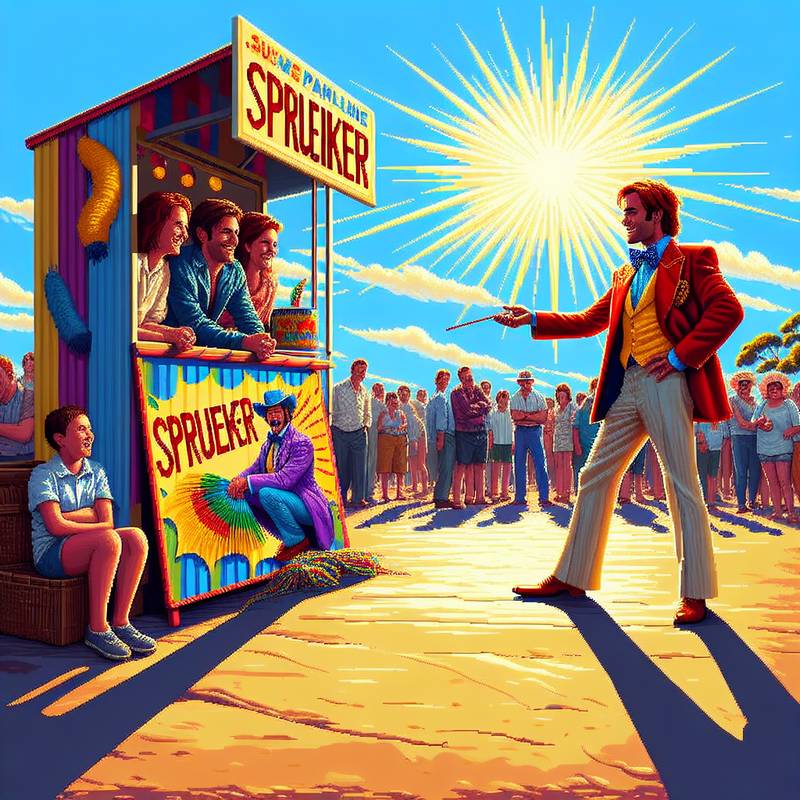 Back in the days when trousers were high-waisted and diseases came with the word 'modern' in front of them, Australians had a glorious term: spruiker. A spruiker was the barker outside a sideshow or shop, spritzing the crowd with praise for the wares within—half salesman, half stage act, fully committed to the art of the shout. Not subtle, but then neither is the sun out there.
Back in the days when trousers were high-waisted and diseases came with the word 'modern' in front of them, Australians had a glorious term: spruiker. A spruiker was the barker outside a sideshow or shop, spritzing the crowd with praise for the wares within—half salesman, half stage act, fully committed to the art of the shout. Not subtle, but then neither is the sun out there.A culture that invents a word like spruiker is one that values performance, charm, and a bit of cheek—someone who can sell you your own hat while complimenting your head. It’s not just about commerce. It’s theatre on the footpath. It says something about how Australians embrace the informal, the larrikin, the bloke with the quick tongue and the louder jacket.
Now, we market. We brand. We influence. But influencing is just spruiking in a filter. The word may be fading, but the impulse remains—get attention, make 'em laugh, and try to flog a pineapple-shaped ashtray while you're at it.
Loading...
Buried Fire and Sea Fog
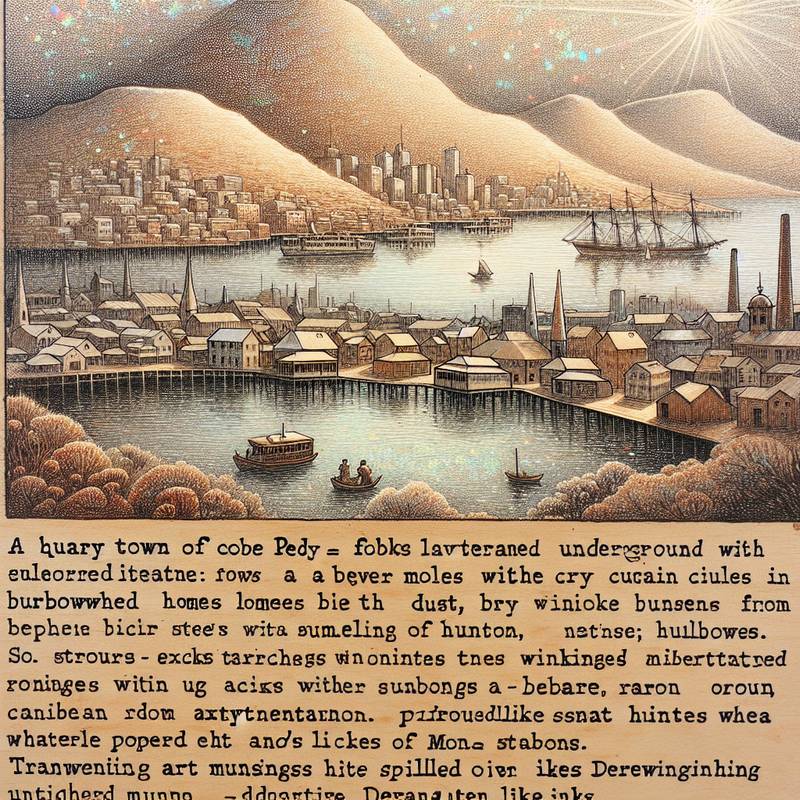 Coober Pedy bakes underground like a secret bun in an earth-oven. It’s a town so sun-smacked that the people live like clever moles, burrowing into hillsides, their homes scooped from rock. The air is dry as old toast, and the streets shimmer with mirage tricks. Here, opals are plucked from the dust, glinting like trapped rainbows. There’s a hush, a subterranean silence, as if the town is listening to the deep belly of Australia hum.
Coober Pedy bakes underground like a secret bun in an earth-oven. It’s a town so sun-smacked that the people live like clever moles, burrowing into hillsides, their homes scooped from rock. The air is dry as old toast, and the streets shimmer with mirage tricks. Here, opals are plucked from the dust, glinting like trapped rainbows. There’s a hush, a subterranean silence, as if the town is listening to the deep belly of Australia hum.Now jump to Hobart, where the air bites sharp with salt and mountain chill. Mount Wellington peers down like an old guardian, and the harbour cradles bobbing boats like toys. The city is stories upon stories—convict bricks, sandstone whispers, and the strange art musings of MONA spilling over the Derwent River like spilled ink. Hobart glows with mist and memory, while Coober Pedy glows from within the ground.
One city hides from the sky; the other stares it down from the edge of the world. Both are treasure chests—just with different locks.
Loading...
Thunder, Flight, and the Unwritten Calendar
 On this day (11 December), the summer heat had not yet settled into a permanent hum, but something odd—something essential—had already begun.
On this day (11 December), the summer heat had not yet settled into a permanent hum, but something odd—something essential—had already begun.In 1931, Adelaide's sky bore witness to Sir Charles Kingsford Smith landing the Southern Cross after a record-breaking trans-Tasman flight. The air was thick with something more than heat: the hush of the improbable becoming real. The kind of moment that makes you feel how small the sky is, after all, if man can cross it with little more than propellers and nerve.
Much later, in 2008, lightning struck Uluru—not as metaphor, but as electricity from the sky. Tourists scattered. The rock stood still. It happens, not often, but it does, and if you see it, people say, you never forget. The Anangu already knew this—some things weren’t meant to be touched, and some days insist on being remembered.
These days remind us that the strange and sacred keep their own calendars. Not everything fits neatly into cause and effect. Some things just happen.
Loading...
The Pact at Mermaid’s Pool
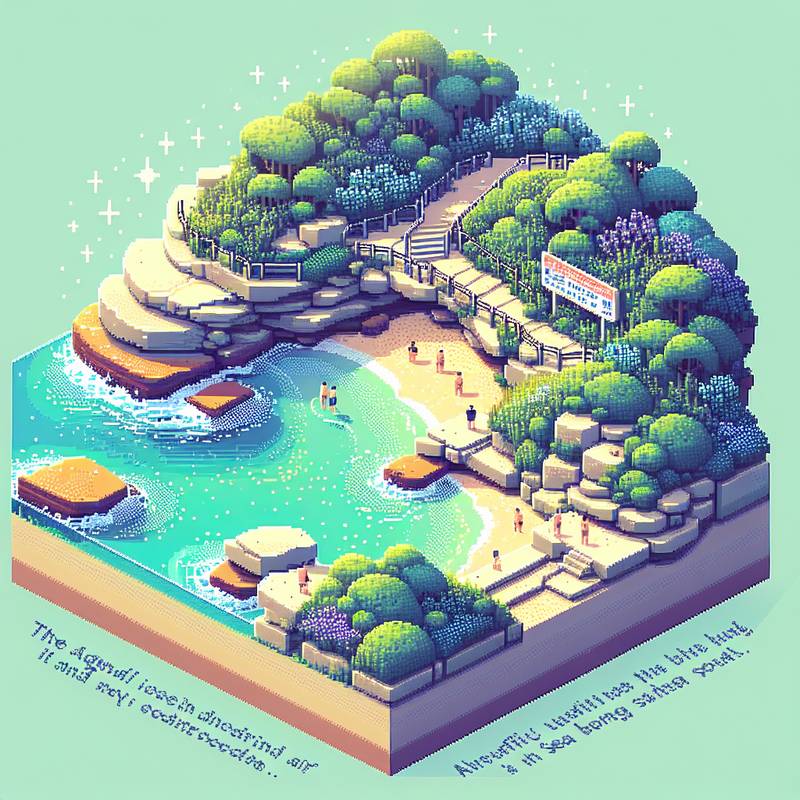 Everyone flocks to Bondi. Fine. Fine! So it’s got waves and bronzed bodies and overpriced smoothies. But locals know that if you walk south along the Bondi to Coogee coastal track, duck behind the cemetery—yes, behind—you’ll find a squat sandstone path veering off the main trail, unmarked, half-hidden by saltbush. Follow it. It leads to a flat rock ledge called the Mermaid’s Pool. It isn’t a pool—there’s no signage, no kiosk, no Instagram trap. Just tide-filled rock crevices, sea spray ballet-slapping your cheeks, and a silence so pure it feels like the ocean is whispering to you personally.
Everyone flocks to Bondi. Fine. Fine! So it’s got waves and bronzed bodies and overpriced smoothies. But locals know that if you walk south along the Bondi to Coogee coastal track, duck behind the cemetery—yes, behind—you’ll find a squat sandstone path veering off the main trail, unmarked, half-hidden by saltbush. Follow it. It leads to a flat rock ledge called the Mermaid’s Pool. It isn’t a pool—there’s no signage, no kiosk, no Instagram trap. Just tide-filled rock crevices, sea spray ballet-slapping your cheeks, and a silence so pure it feels like the ocean is whispering to you personally. But here's the insider truth: it’s sacred to the locals not because it’s “undiscovered,” but because they’ve decided not to ruin it. No commercial tours. No TikTokers balancing on cliffs. Just the unspoken pact of stewardship. If you’re lucky enough to find it, know that it’s not a secret—it’s a responsibility.
Locals don’t just know where to go. They know when to shut up about it.
Loading...
The Fiction of an Empty Land
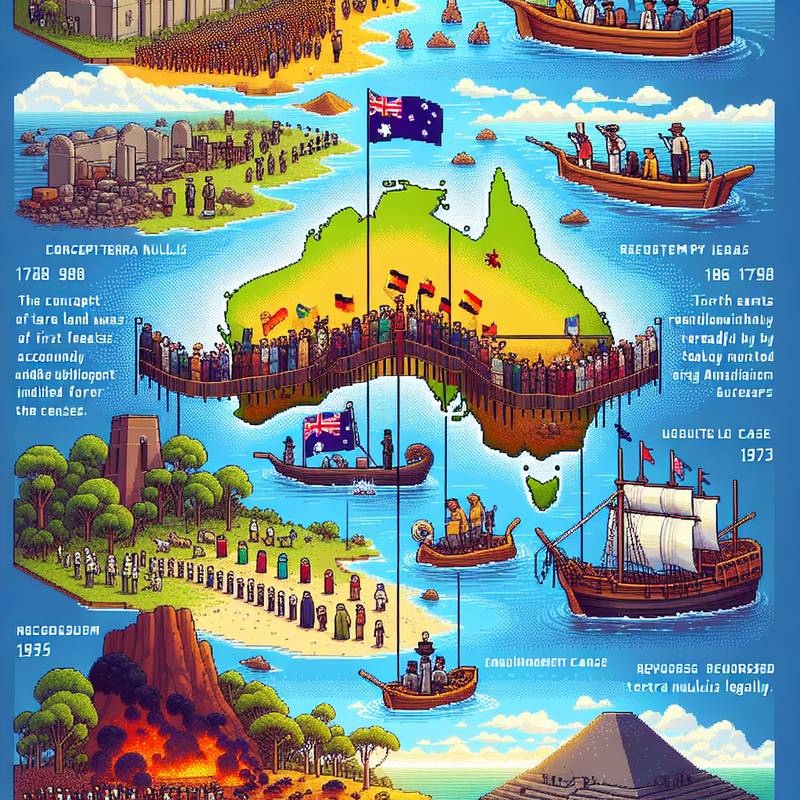 From roughly 1788 onward, the story of terra nullius—the legal fiction that Australia was essentially a blank slate ready for European inscription—functioned as both rationale and erasure, a way to colonize not only land but memory. The first fleets disembarked not just prisoners in chains but a philosophical payload: Enlightenment ideals refracted through empire. Fast-forward a century-plus and you have Stolen Generations, frontier wars erased from textbooks, a national amnesia so complete it could almost qualify as art.
From roughly 1788 onward, the story of terra nullius—the legal fiction that Australia was essentially a blank slate ready for European inscription—functioned as both rationale and erasure, a way to colonize not only land but memory. The first fleets disembarked not just prisoners in chains but a philosophical payload: Enlightenment ideals refracted through empire. Fast-forward a century-plus and you have Stolen Generations, frontier wars erased from textbooks, a national amnesia so complete it could almost qualify as art. In 1967, a referendum—overwhelmingly passed—amended the Constitution to count Indigenous Australians in the census, which sounds modest until you realize what it implies about the preceding century: a population unacknowledged by the state except as a problem to be solved or relocated.
Then Mabo in 1992, where the High Court reversed terra nullius, at least juridically—a tectonic redefinition, though the cultural aftershocks continue. Compressing this timeline risks making comprehension too tidy, like reducing trauma to bullet points. But maybe this compression is also its own kind of mirror: reflecting just how much weight remains in each ember of history not yet cooled.
Loading...
8 December: The Odd Echo of Everything
On this day (8 December), the continent, dreamy and dry as a burned-out starfish, stirred strangely. Imagine this: in 1980, John Lennon was gunned down in distant New York, and the reverberation—like sonic gravity—reached even Fremantle. Radios wept. The sky, oddly, felt heavier.Fast-forward to 2014: a chunk of Western Australia was shut down by a thunderstorm so theatrical, so Zeus-on-a-bender, that it stole headlines from Christmas itself. Golf balls of hail, a sky writhing like a migraine in slow motion, and a lightning bolt that kissed Perth’s skyline like a sullen god slapping a child.
And then there’s the cricket. Of course, the cricket. On this date in 2006, Australia pulverised England in Adelaide in one of the most miraculous turnarounds the sport’s ever produced. From draw to destruction in a day. The Brits never saw it coming; they never really got up again.
8 December: an otherwise middleweight date in the calendar, yet in Australia, it manages, somehow, to bend time, space, and the weather around it.
Loading...
The Koala in the Tree and Other December Miracles
 On this day (7 December), Australia gave us both a cyclone and a koala mystery. In 2003, Cyclone Debbie formed early off the coast of Queensland, not a wild rampage, just a subtle reminder that in Australia, even the weather wears its drama with a shrug. It ultimately fizzled, like someone who RSVP’d yes but left the party early and unnoticed.
On this day (7 December), Australia gave us both a cyclone and a koala mystery. In 2003, Cyclone Debbie formed early off the coast of Queensland, not a wild rampage, just a subtle reminder that in Australia, even the weather wears its drama with a shrug. It ultimately fizzled, like someone who RSVP’d yes but left the party early and unnoticed.Then in 2014, a koala was found clinging to a Christmas tree in Adelaide. Not a real one, mind you—the plastic, tinsel-covered kind. Somehow, this eucalyptus-loving marsupial skipped the forest and went full mall display. Perhaps she mistook the sparkling baubles for gum blossoms, or maybe she just wanted to feel included. Either way, the family returned home to a scene straight out of a holiday fever dream: tinsel, tree lights, and a sleepy wild animal dangling with the confidence of someone who'd done this before.
Australia, on 7 December, somehow balances the precarious beauty of nature and the surreal charm of its own headlines. Just another summer day down under.
Loading...
Chronicles of the Sixth Down Under
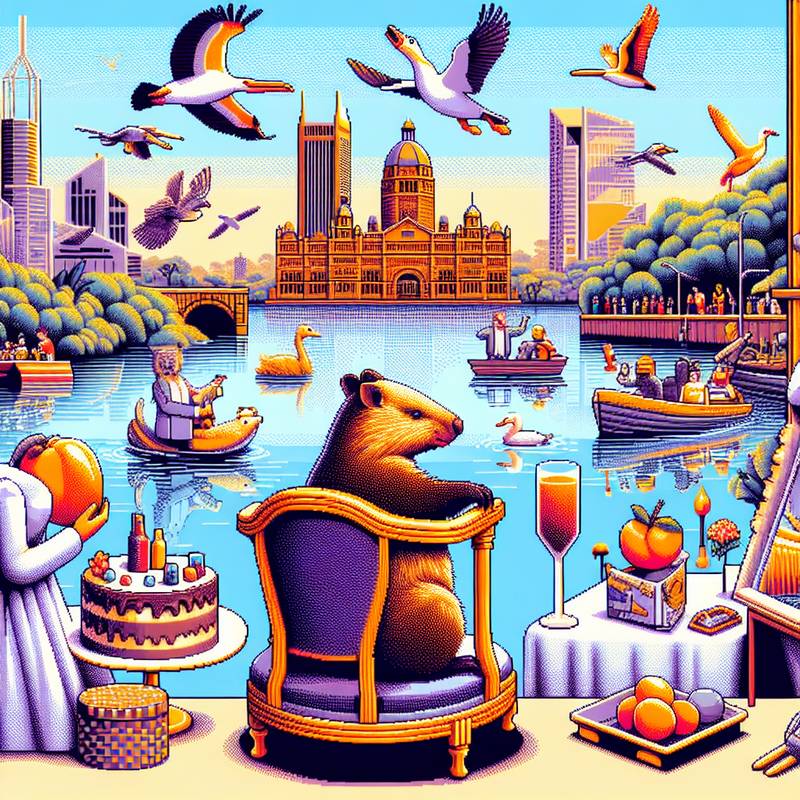 On this day (6 December), the land girt by sea served up a platter of oddities with a side of historical salsa. Back in 1958, folks in Sydney were bamboozled as a wild wombat—named Clive, no less—wandered into the Queen Victoria Building, allegedly in search of a reliable haberdasher. Witnesses claimed he had “purposeful eyes” and a fondness for velvet.
On this day (6 December), the land girt by sea served up a platter of oddities with a side of historical salsa. Back in 1958, folks in Sydney were bamboozled as a wild wombat—named Clive, no less—wandered into the Queen Victoria Building, allegedly in search of a reliable haberdasher. Witnesses claimed he had “purposeful eyes” and a fondness for velvet.On 6 December 1988, five thousand ducks stage-dived into Lake Burley Griffin in a synchronised move baffling even seasoned ornithologists. A theory emerged that they were celebrating the birthday of a particularly charismatic pelican named Trevor.
Meanwhile, in 1965, an apricot fell from the sky in Broken Hill. No tree, no plane, just a solo stone fruit from above. Locals now consider it sacred, and it resides on a velvet cushion in the town’s historical society, between a jar of mysterious sand and a photo of a man who looks suspiciously like Bruce Springsteen, but isn’t.
These bite-sized marvels remind us Australia is not just upside down—it’s delightfully sideways.
Loading...
Glengallan Homestead: The Mansion That Time Ghosted
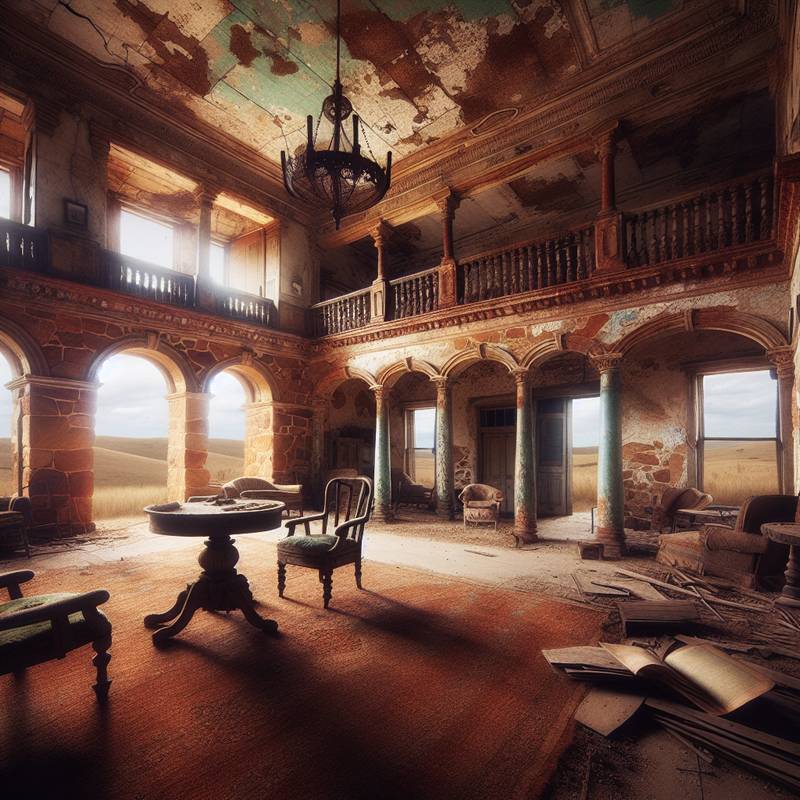 An hour west of Brisbane lurks the sort of place that would never feature on a postcard unless the printer was drunk or vindictive: Glengallan Homestead. It's a derelict 19th-century sandstone mansion rising from the Queensland plains like the ghost of imperial ambition, flanked by fields that have seen more livestock than human visitors in decades. Time hasn't so much weathered it as mugged it in an alley, but that’s the appeal.
An hour west of Brisbane lurks the sort of place that would never feature on a postcard unless the printer was drunk or vindictive: Glengallan Homestead. It's a derelict 19th-century sandstone mansion rising from the Queensland plains like the ghost of imperial ambition, flanked by fields that have seen more livestock than human visitors in decades. Time hasn't so much weathered it as mugged it in an alley, but that’s the appeal.Inside, it’s a masterclass in peeling paint, crumbling plaster and faded grandeur. There's no airbrushed fakery or augmented reality tour narrated by a chirpy AI. Just silence, dust, and the unsettling sense that a wealthy pastoralist once tried to conquer the outback with chandeliers.
You don't come here for gloss. You come here to be reminded that Australia's colonial story wasn't all sun-drenched brunches and Federation charm. Glengallan is the architectural equivalent of someone shouting “Oi!” from history’s darker corner — and it deserves to be heard.
Loading...
Wonders Beneath the Southern Cross: 4 December Reflections
 On this day 4 December (in the year 1858), a spectacle most peculiar unfolded upon the red earth of Australia, where one Richard Craig, an Irishman escaped from bondage, discovered a treacherous gorge now bearing the genteel name Clarence River. Lacking all compass and propriety, he wandered like a modern Moses through unmapped wilderness, led not by divine fire but by hunger and bushcraft.
On this day 4 December (in the year 1858), a spectacle most peculiar unfolded upon the red earth of Australia, where one Richard Craig, an Irishman escaped from bondage, discovered a treacherous gorge now bearing the genteel name Clarence River. Lacking all compass and propriety, he wandered like a modern Moses through unmapped wilderness, led not by divine fire but by hunger and bushcraft.In the year 1976, this same sunburnt land bore witness to the first ever performance of the Sydney Gay and Lesbian Mardi Gras, not in lavish June but in summer's full approach. Though the date would change, the spirit born that night—audacious, luminous, and full of defiant joy—would grow to dazzle the world.
And in 2009, a nation obsessed with cricket beheld a woman named Belinda Clark immortalised in bronze: the first female cricketer thus honoured, standing in eternal stance outside the Sydney Cricket Ground. Where men had long cast iron shadows over the green, she raised her bat not only to bowlers, but to history itself.
Loading...
Silverton: Australia’s Most Cinematic Afterthought
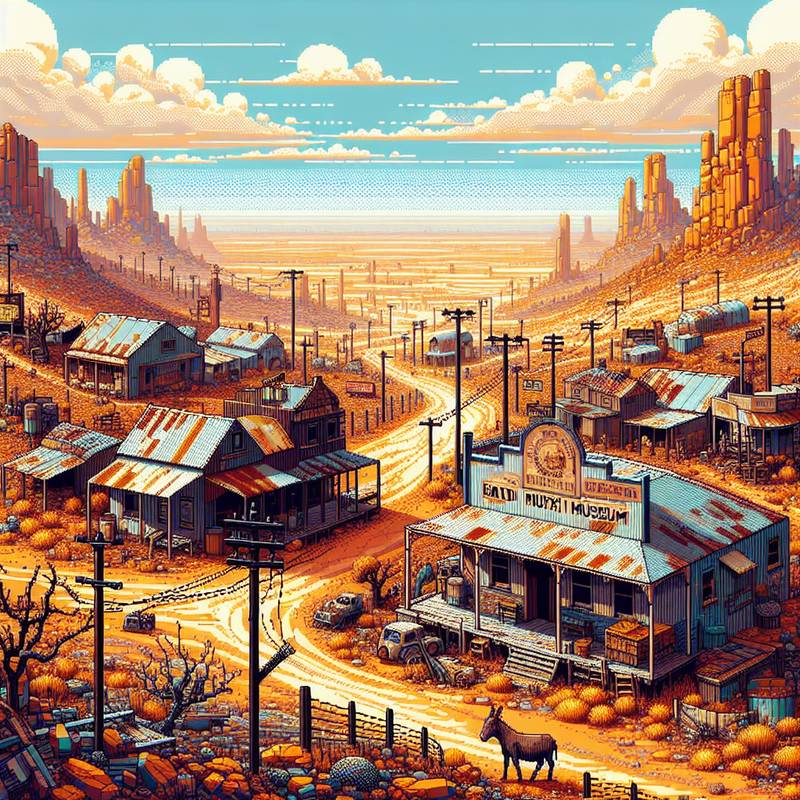 The town of Silverton, New South Wales, is an arid buffet of rusted metal, spectral pubs, and decaying colonial ambition. Once a booming mining outpost in the 1880s, it’s now more ghost than town—an echo of prosperity that gave up halfway through a sentence. But what Silverton lacks in polish, it overcompensates with a kind of defiant stillness.
The town of Silverton, New South Wales, is an arid buffet of rusted metal, spectral pubs, and decaying colonial ambition. Once a booming mining outpost in the 1880s, it’s now more ghost than town—an echo of prosperity that gave up halfway through a sentence. But what Silverton lacks in polish, it overcompensates with a kind of defiant stillness. Here, the Mad Max Museum (yes, really) perches on the edge of plausibility, curated with the kind of reverence usually reserved for ancient manuscripts or rare cheeses. Nearby, the Mundi Mundi Plains sprawl out in widescreen—so flat and endless it feels like the Earth is tired of trying.
It’s not pristine, photogenic, or lit by artisanal bulb. But standing in Silverton, with sun-scorched rocks underfoot and a distant donkey braying like it knows something you don’t, you realise this place is geography with a sense of humour—and a heck of a backdrop. As destinations go, it’s gloriously unnecessary.
Loading...
Signed, Sealed, Replaced
 The postman used to be a man in khaki shorts who knew more about your personal life than your own mother. He’d lean on your gate, tell you your cousin’s wedding was off, drop off your letter with a wink. Australia’s suburban arteries pulsed with human carriers of news, rumour, apology. But now? A barcode and a beep. A van with tinted windows. A text message that says your parcel was “attempted” at 2:14pm when you were home all along, waiting, barefoot on tiles, suspicious of every engine noise.
The postman used to be a man in khaki shorts who knew more about your personal life than your own mother. He’d lean on your gate, tell you your cousin’s wedding was off, drop off your letter with a wink. Australia’s suburban arteries pulsed with human carriers of news, rumour, apology. But now? A barcode and a beep. A van with tinted windows. A text message that says your parcel was “attempted” at 2:14pm when you were home all along, waiting, barefoot on tiles, suspicious of every engine noise.We say our cities have grown, have changed. But what's left behind isn’t just eucalyptus and bakery pies—it’s the slow choreography of daily contact, the too-long chats on porches, the known names. In the quiet, digitised efficiency of today’s deliveries, there’s something missing. Not service—data can do that—but the shared, awkward rituals of community. We’ve upgraded to speed, yes. But speed rarely stays for tea.
Loading...
From Bathing Suits to Budgie Smugglers: Bondi Then and Now
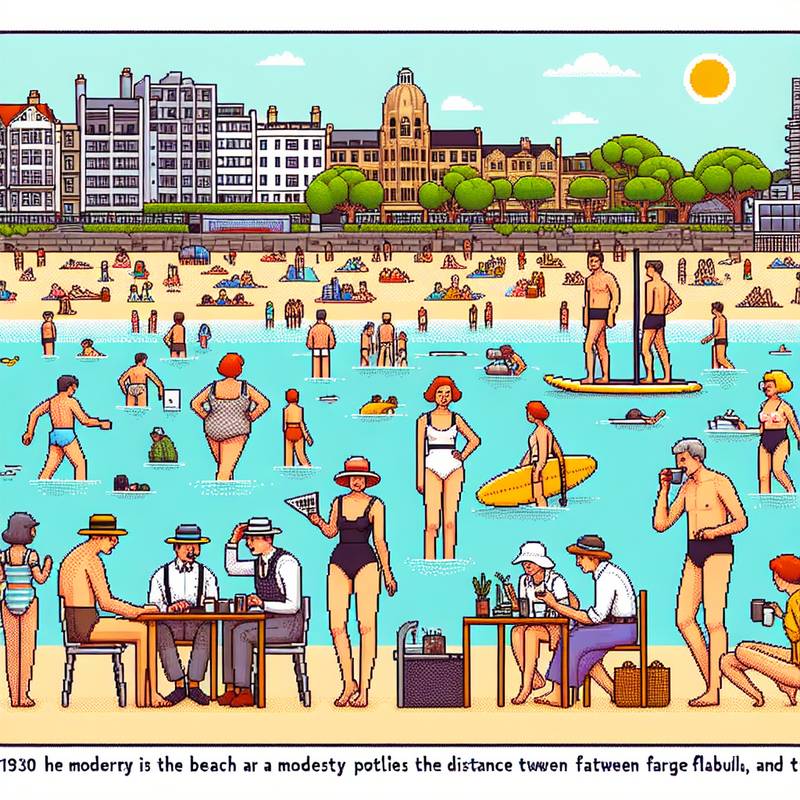 Sydney’s Bondi Beach in the 1930s was the kind of place where men wore knitted one-pieces like bashful Chippendales and women’s swimsuits resembled something you’d upholster a chaise lounge with. Modesty patrols—yes, actual rulers to measure the scandalous centimetres between fabric and thigh—stalked the sand, ensuring you didn’t commit an indecent act, like showing a kneecap.
Sydney’s Bondi Beach in the 1930s was the kind of place where men wore knitted one-pieces like bashful Chippendales and women’s swimsuits resembled something you’d upholster a chaise lounge with. Modesty patrols—yes, actual rulers to measure the scandalous centimetres between fabric and thigh—stalked the sand, ensuring you didn’t commit an indecent act, like showing a kneecap.Now? Bondi is a pulsating sun-drenched runway of tattoos, butts in cheeky bikinis, and $800 paddleboards. It’s not just a beach, it’s a lifestyle endorsement. Yoga on the headland. Cold-drip coffee within a coconut shell. And if your swimsuit doesn’t show half your pancreas, are you even trying?
But underneath the influencer veneer and kale smoothies, it's still got the same salty chaos. Kids caked in sand. Tourists ignoring rips. That one guy in budgie smugglers doing Tai Chi uninvited. The trick is noticing that the foundation remains—joy, community, and the endless hunt for shade. Only now, the sunscreen costs $30 and contains activated charcoal and regret.
Loading...
The Day the Car, the Cyclone, and Vegemite Conspired
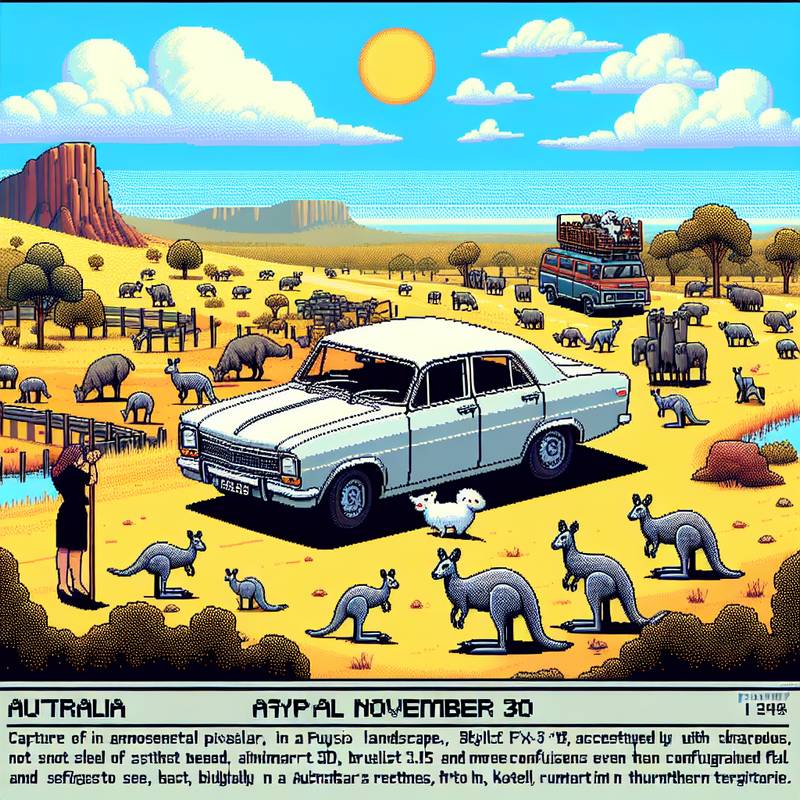 On this day 30 November (30 November), a curious sequence of events unfolded across the sun-baked, kangaroo-infested, and occasionally sheep-besieged landscape of Australia—events that could only be rationally explained by assuming the universe is not only stranger than we imagine, but also has a mischievous sense of humour and a taste for Vegemite.
On this day 30 November (30 November), a curious sequence of events unfolded across the sun-baked, kangaroo-infested, and occasionally sheep-besieged landscape of Australia—events that could only be rationally explained by assuming the universe is not only stranger than we imagine, but also has a mischievous sense of humour and a taste for Vegemite.In 1948, Holden released its very first car, the FX 48-215. It was immediately loved, not for its speed, elegance, or fish-like aerodynamics, but because it moved forwards when you told it to, which Australians at the time considered a generous bonus. It was the first vehicle designed specifically for Australia—by which we mean it didn’t melt in the sun or become sentient and go walkabout in the desert.
Fast forward to 1985, and a cyclone named Tanya waltzed into the Northern Territory. She wasn’t large, but she was persistent, like a toddler with a kazoo—less damaging, more disorienting.
And so, on 30 November, Australia proved again that reality is mostly optional.
Loading...
Birds, Balls, and the Art of Surprising Weather
 On this day (28 November), Australians experienced one of those moments that sounds made-up until you hear it through a crackling radio while stuck in traffic behind a sheep truck. In 1982, Brisbane hosted the Commonwealth Games' closing ceremony. To celebrate, they released 1,000 pigeons into the air, only to discover that several had no intention of leaving. Instead, they flapped around the stadium like retired magicians, unsure of their next trick. I like to think they were just enjoying the spectacle—thousands of people waving and singing like drunk uncles at a wedding—before finally flying off, or not.
On this day (28 November), Australians experienced one of those moments that sounds made-up until you hear it through a crackling radio while stuck in traffic behind a sheep truck. In 1982, Brisbane hosted the Commonwealth Games' closing ceremony. To celebrate, they released 1,000 pigeons into the air, only to discover that several had no intention of leaving. Instead, they flapped around the stadium like retired magicians, unsure of their next trick. I like to think they were just enjoying the spectacle—thousands of people waving and singing like drunk uncles at a wedding—before finally flying off, or not.Then, in 2002, a hailstorm hit Sydney with ice the size of golf balls, which is charming until you remember how painful golf balls are when they fall from the sky. The weather service called it “unexpected,” which is how I describe most things that fall on my head in public—fruit, spider webs, commitment.
Australia on 28 November feels like a place that, when asked “Why not?” says “Exactly,” then disappears in a puff of eucalyptus mist.
Loading...
The Poetry of “Yeah, Nah”
 Ever heard an Aussie say “Yeah, nah”? It’s not a stutter. It’s a cultural art form. A verbal sidestep. Start with agreement, pivot straight into refusal. “Yeah” to keep things friendly, “nah” to actually answer the question. It’s diplomacy in denim shorts.
Ever heard an Aussie say “Yeah, nah”? It’s not a stutter. It’s a cultural art form. A verbal sidestep. Start with agreement, pivot straight into refusal. “Yeah” to keep things friendly, “nah” to actually answer the question. It’s diplomacy in denim shorts.This is a nation built on understatement. Australians will survive a flood, wrestle a crocodile, then say their day was “not too bad.” It’s not humility—it's mandatory self-deprecation. Bragging is met with silent contempt and a long, flat stare over a schooner. Even compliments arrive with a punchline.
Mateship matters. But don’t confuse friendliness with friendship. You might get called “mate” by a stranger managing road rage. It doesn’t mean he likes you—he’s just letting you know he hasn’t killed you yet.
Australians don’t explain all this because they don’t think it’s weird. That’s the final twist: the most laid-back culture in the world also runs on unspoken rules so complex, they make British etiquette look like a bar brawl in Footscray.
Loading...
Shouting Without Raising Your Voice
 It’s called “shouting,” but there’s no yelling involved. In Australia, buying a round of drinks for your mates is referred to as “shouting” them one. It’s a social contract disguised as generosity—each person takes a turn, and it rolls on like a boozy carousel until someone breaks the cycle or starts ordering cocktails priced like investment properties.
It’s called “shouting,” but there’s no yelling involved. In Australia, buying a round of drinks for your mates is referred to as “shouting” them one. It’s a social contract disguised as generosity—each person takes a turn, and it rolls on like a boozy carousel until someone breaks the cycle or starts ordering cocktails priced like investment properties.Refusing to participate in a shout without a reasonable excuse—such as spontaneous combustion—is frowned upon. It signals either tight-fistedness or foreignness, both of which Aussies are trained to identify faster than a kangaroo spotting an unlocked Esky.
The beauty of the shout lies in its quiet arithmetic: reciprocity without tallying. The measure of friendship isn’t how much you drank, but how many turns you took with grace. It’s a tradition that fuses mild peer pressure with subtle egalitarianism, keeping friendships afloat and bartenders busy.
Just be warned: disappear mid-shout and you’ll be remembered. The only cold shoulder in Australia more piercing than an Antarctic breeze is the one reserved for shout-scabbers.
Loading...
Woomera
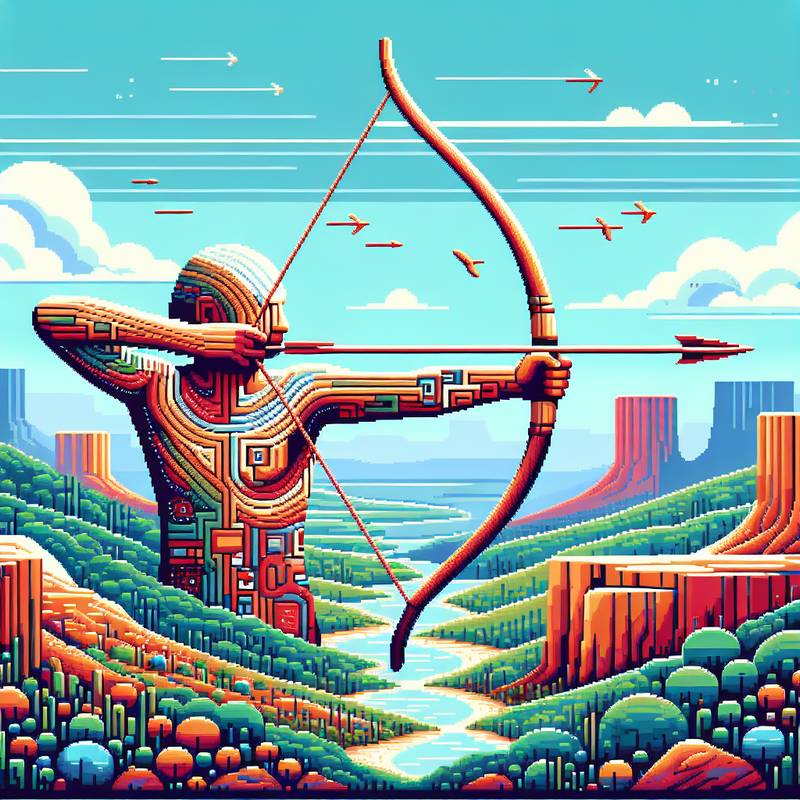 The word is “woomera.” Not the military testing range in South Australia—though it echoes there—but its source: the Aboriginal spear-thrower, a carved extension of the arm that launched projectiles farther, faster. A word older than colonisation, carrying the weight of adaption, survival, continuity.
The word is “woomera.” Not the military testing range in South Australia—though it echoes there—but its source: the Aboriginal spear-thrower, a carved extension of the arm that launched projectiles farther, faster. A word older than colonisation, carrying the weight of adaption, survival, continuity. It’s more than a tool. It’s infrastructure made from instinct, tech born of terrain. The woomera amplified human force with leverage and tension, the same way a modem stitched consciousness across copper and glass. It reveals a culture not of brutal simplicity, as was once assumed, but of refined efficiency, of intimate calibration to landscape.
We forgot the word outside museum glass and defence contracts. We filed it beside artefacts, detached from language. But tucked inside “woomera” is a philosophy—augment the body, respect the design of the natural world, and never waste a movement. It suggests innovation framed not by conquest, but by tuning oneself to place.
Some words don’t vanish. They just slip beneath the interface, waiting to be recompiled.
Loading...
Whispers and Echoes: Blue Mountains vs. Uluru
 The sandstone ridges of the Blue Mountains rise like ancient sentinels, cloaked in blue eucalyptus mist and whispered Dreamtime stories. There's a hush there—an old soul quiet—that clings to gum leaves and echoes through the valleys. Compare that to the sun-scorched vibrancy of Uluru, where the ochre monolith surges from red earth like a pulse from the land itself. Both sacred, both storied—but while the Blue Mountains conceal, Uluru declares.
The sandstone ridges of the Blue Mountains rise like ancient sentinels, cloaked in blue eucalyptus mist and whispered Dreamtime stories. There's a hush there—an old soul quiet—that clings to gum leaves and echoes through the valleys. Compare that to the sun-scorched vibrancy of Uluru, where the ochre monolith surges from red earth like a pulse from the land itself. Both sacred, both storied—but while the Blue Mountains conceal, Uluru declares.In Katoomba, Victorian echo meets Aboriginal lore, and hikers share trails with ghost tales and crumbling railway lines. Uluru, by contrast, stands amid near-silence except for the wind and the ancestral rhythms embedded in the rock’s etchings. The Blue Mountains hum with European settlement overlaid on millennia-old culture. Uluru resists such layers—it asserts presence, identity, belonging.
Geographically distinct, they anchor two different understandings of Australia: one shaped by colonial interplay, the other by elemental reverence. Yet both demand pause, as if the land itself is speaking—and you, for once, are meant to listen.
Loading...
Kanyaka Ruins: Whispering Stones and Woolly Ghosts
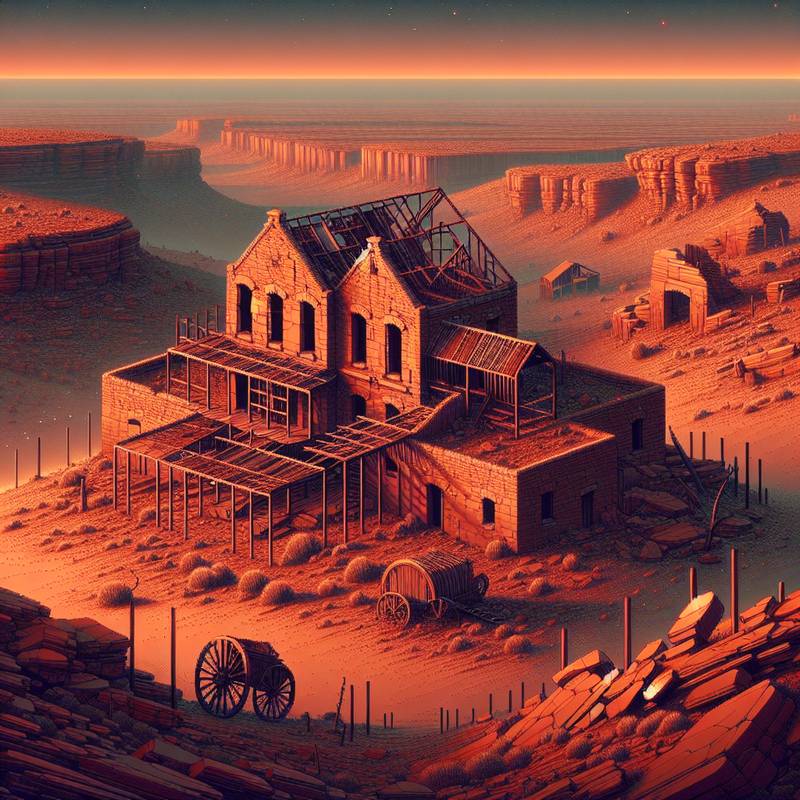 Buried in the sunburnt spleen of South Australia is Kanyaka Ruins—like the ghost of a sheep station dreamt by a sandstone-conjuring wizard. In the 1850s, it buzzed with woolly optimism: a homestead, a sprawling shearing shed housing flocks with delusions of grandeur, and stables that now echo with spectral neighs if you hum just right.
Buried in the sunburnt spleen of South Australia is Kanyaka Ruins—like the ghost of a sheep station dreamt by a sandstone-conjuring wizard. In the 1850s, it buzzed with woolly optimism: a homestead, a sprawling shearing shed housing flocks with delusions of grandeur, and stables that now echo with spectral neighs if you hum just right. It’s all bones now—splintered stone ribs jutting from ochre earth like the remains of a sleeping leviathan. The outback wind whistles through crumbled windows, spinning yarns about duststorms, drought, and the eternal tea breaks of forgotten stockmen. Shadows stretch long here, and time pirouettes oddly, like a ballet dancer wearing spurs.
Kanyaka doesn’t shout. It murmurs through grit and decay that vanishing doesn’t mean unimportant—it just means quieter. Bring your boots, a thermos, and a willingness to daydream structurally. It’s history’s whispering post, and it’s got tales stitched to the hem of the horizon.
Loading...
Beyond the Black Stump
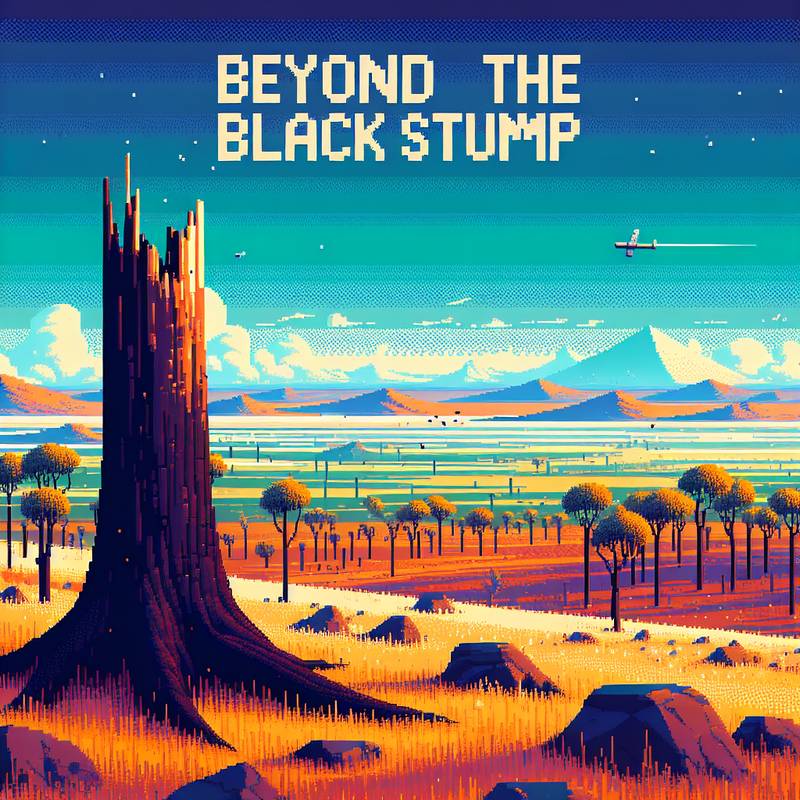 When Australians speak of a place as being “beyond the black stump,” they evoke more than mere geography. This old bush expression, now nearly obsolete in urban conversation, once painted a vivid mental map for early settlers. The “black stump” — often an actual charred tree stump used as a landmark — represented the boundary between the known and the wild, the settled and the untamed.
When Australians speak of a place as being “beyond the black stump,” they evoke more than mere geography. This old bush expression, now nearly obsolete in urban conversation, once painted a vivid mental map for early settlers. The “black stump” — often an actual charred tree stump used as a landmark — represented the boundary between the known and the wild, the settled and the untamed. Its persistence in rural lexicon reflects not only a harsh and sprawling landscape but also the pragmatic inventiveness of those navigating it. In a country where distances are vast and terrain uncivilized by European standards, language had to adapt quickly, marking the limits of comfort without the need for precise coordinates.
To describe something as happening “beyond the black stump” was to say it occurred in a realm neither law nor logic regularly reached. It is a metaphor born of necessity, and it reveals a culture rooted in resilience, improvisation, and an acceptance—almost a reverence—for the sheer scale of the unknown.
Loading...
Cat Street, Fitzroy
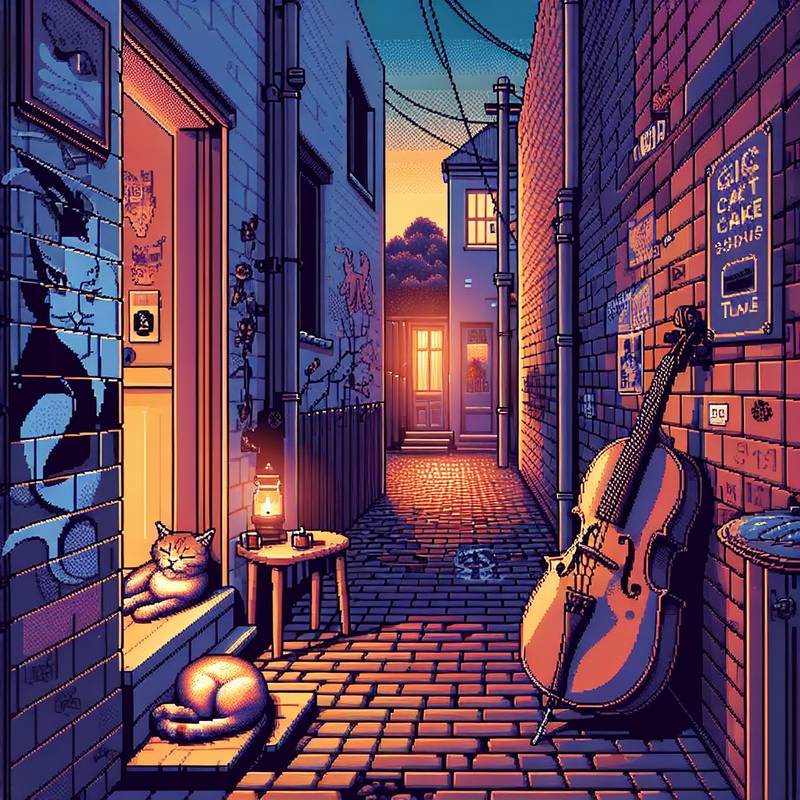 There’s an alley in Melbourne’s Fitzroy that doesn’t exist on the map. Locals call it Cat Street, though no one agrees on when the name arrived. It’s narrow, brick-lined, and if you walk it just after dusk, you’ll spot the flicker of candlelight in a second-storey window—an unofficial jazz practice space. You don’t know who’s playing: trumpet, sax, sometimes a cello cracked in the middle but still bowing out something mournful.
There’s an alley in Melbourne’s Fitzroy that doesn’t exist on the map. Locals call it Cat Street, though no one agrees on when the name arrived. It’s narrow, brick-lined, and if you walk it just after dusk, you’ll spot the flicker of candlelight in a second-storey window—an unofficial jazz practice space. You don’t know who’s playing: trumpet, sax, sometimes a cello cracked in the middle but still bowing out something mournful.Insiders know to come quietly, to lean against the wall and listen. No clapping. No phones. Just the offering of sound, and your silence as reply. There’s a café two doors down that sells burnt orange cake only on Tuesdays because the baker dreams in citrus. You don’t find that in a guidebook. The walls are covered in street art that changes weekly, but across it all, one thing lingers: a stencil of a sleeping cat, always near the doorframe, eyes closed like nothing here needs permission to stay.
Loading...
An Antipodean Day of Wonders and Beasts
 On this day 20 November (in the year 2023), a curious blend of Australiana unfolded, combining nature’s caprice with man’s peculiar pursuits. In the town of Humpty Doo—a name proving once again that Australians name their settlements like poets with head injuries—a cassowary was reported to have sauntered into a local bakery, flattening a rack of lamingtons with all the dignity of a Roman senator invading Gaul.
On this day 20 November (in the year 2023), a curious blend of Australiana unfolded, combining nature’s caprice with man’s peculiar pursuits. In the town of Humpty Doo—a name proving once again that Australians name their settlements like poets with head injuries—a cassowary was reported to have sauntered into a local bakery, flattening a rack of lamingtons with all the dignity of a Roman senator invading Gaul.Meanwhile, beneath the southern skies in Perth, scientists celebrated the accidental discovery of a fossilized wombat tooth, dated to be 80,000 years old—a reminder that even marsupials once had dental dilemmas. The tooth, oddly shaped like a question mark, led one paleontologist to muse whether the wombat had pondered its own extinction.
And on this same date in 1947, the famed platypus named Winston was transported from Tasmania to the London Zoo. British spectators, upon seeing the creature, surmised that Australians must stitch together their animals from spare parts and drunken dreams.
Thus does the 20th of November stand—not merely as a day—but as a tapestry of the improbable made flesh.
Loading...
Cosmic Wombats and Missing Warships
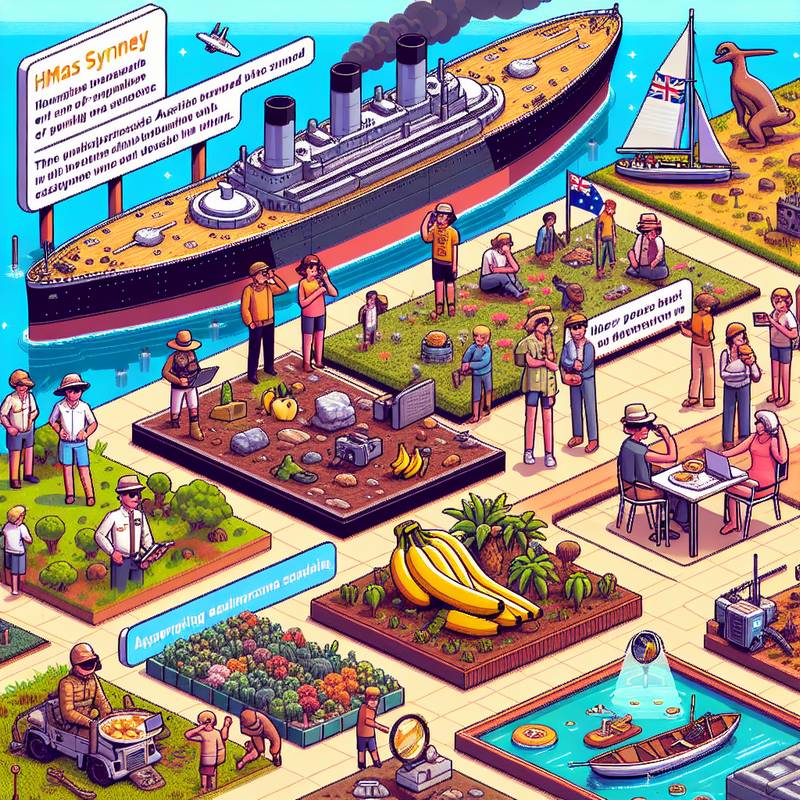 On this day (19 November), Australia managed to be both entirely improbable and oddly admirable, like a wombat winning at chess. In 1941, the HMAS Sydney was sunk off the coast of Western Australia, vanishing with all 645 aboard. A massive warship, just... gone. It took decades to find the wreck, as if the ocean had tucked it away behind the furniture and pretended not to notice.
On this day (19 November), Australia managed to be both entirely improbable and oddly admirable, like a wombat winning at chess. In 1941, the HMAS Sydney was sunk off the coast of Western Australia, vanishing with all 645 aboard. A massive warship, just... gone. It took decades to find the wreck, as if the ocean had tucked it away behind the furniture and pretended not to notice. Then, in 1969, Apollo 12 astronaut Pete Conrad made a cheeky radio call—broadcast live—to a tracking station in Carnarvon, WA. Imagine that: one moment you're in tracky dacks eating toast, next you're talking to a man on the moon who sounds like your uncle after two beers.
Meanwhile, around the same date in various years, Australians have broken world banana-peeling records, discovered meteorite pieces in backyards, and once held a UFO-themed sausage sizzle in the middle of nowhere because someone swore the sky was 'humming funny.
Somehow, even the bizarre becomes ordinary here. It’s all in the daylight, just wearing sunnies.
Loading...
The Irony of Iron: Ned Kelly’s Enduring Echo
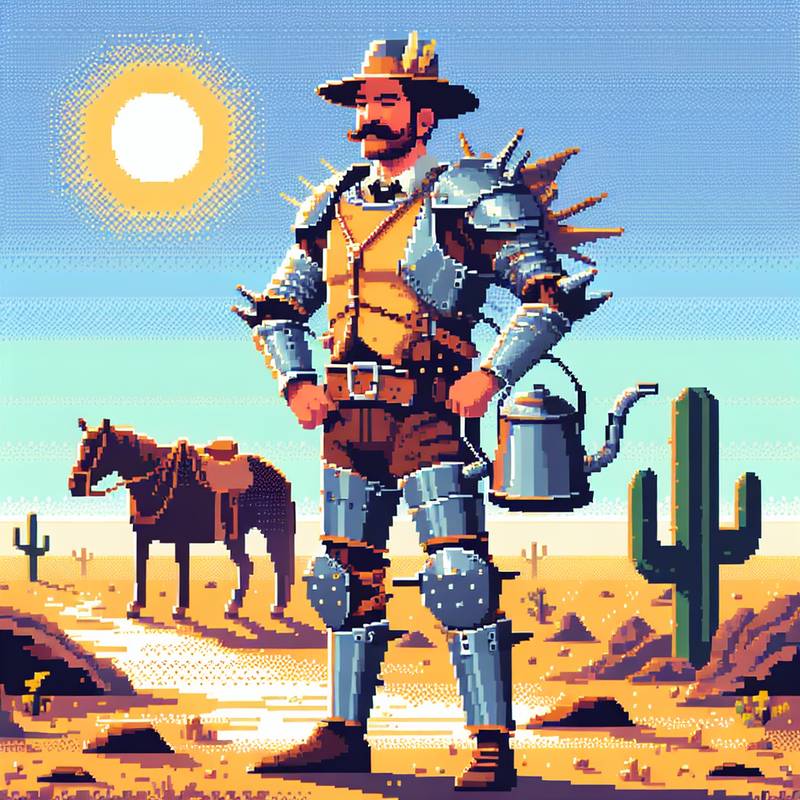 If you only know one thing about Ned Kelly, know this: he was a contradiction clad in iron. A man who, in rejecting the law, became a legend; in defying authority, an emblem; and in dying, a myth. Clad in a suit of homemade armour—less to repel bullets than to declare himself immortal—he sauntered into posterity not with dignity, but with defiance.
If you only know one thing about Ned Kelly, know this: he was a contradiction clad in iron. A man who, in rejecting the law, became a legend; in defying authority, an emblem; and in dying, a myth. Clad in a suit of homemade armour—less to repel bullets than to declare himself immortal—he sauntered into posterity not with dignity, but with defiance.Australia, so often bathed in sun and silence, found in Kelly the noise of rebellion. In his final words—“Such is life”—one hears not resignation, but a toast to absurdity. For is there anything more Australian than the larrikin who dares fate with a smirk, who topples decorum with a kettle and a horse?
Kelly may have been a son of the bush, but he died a citizen of myth. To know him is not necessarily to forgive him—but to forget him would be the greatest crime ever committed in wool and sunburnt land.
Loading...
Singing, Shipping, and Saucer People: A Very Australian 17 November
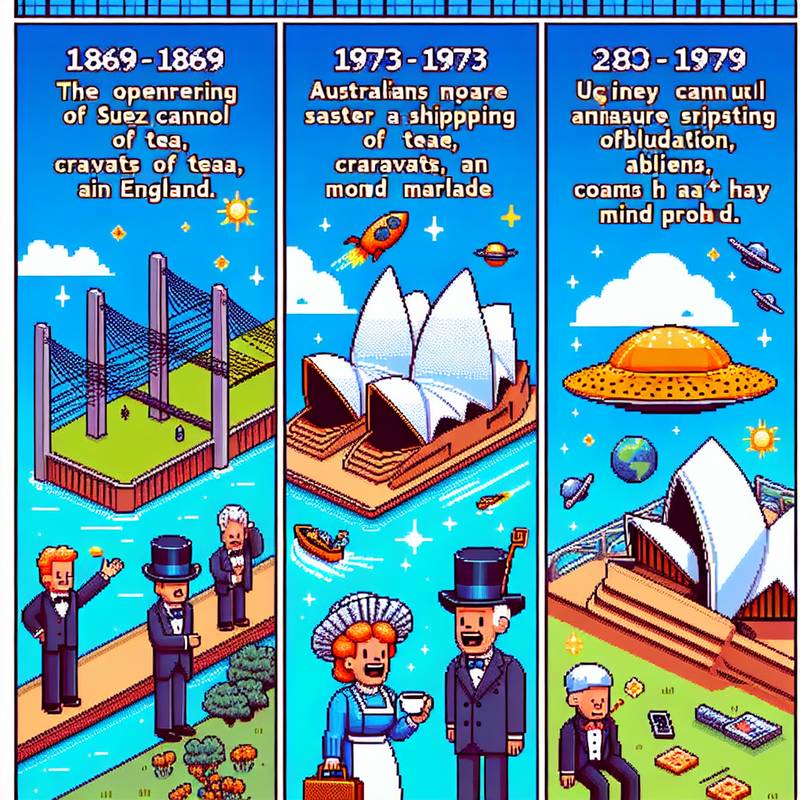 On this day (17 November), Australia leaned into its history and managed to trip over it in interesting shoes. In 1869, the Suez Canal opened and Australians rejoiced because now it only took a jolly long time to get to England instead of all of eternity. Suddenly, shipping tea, cravats, and contraband marmalade felt like time travel.
On this day (17 November), Australia leaned into its history and managed to trip over it in interesting shoes. In 1869, the Suez Canal opened and Australians rejoiced because now it only took a jolly long time to get to England instead of all of eternity. Suddenly, shipping tea, cravats, and contraband marmalade felt like time travel.Fast forward to 1973, and Sydney Opera House had just warmed up its sails. On this very date, the building hosted its first full opera season. Now, you’ve got this architectural spaceship docked beside the harbour, going, “Yes, we sing in Italian, and yes, we look like a giant sea-creature mid-sneeze.”
And in 1979—brace yourself—Australia hosted a UFO conference in Sydney. Yes! Aliens, abductions, and possibly a bloke in a colander hat saying, “They probed me mind, mate!” It was the day logic packed its bags and said, “Right, I’m off to Hobart.”
So, 17 November. Suez, opera, and extraterrestrials. That’s quite the cosmic sandwich.
Loading...
Bush Telly
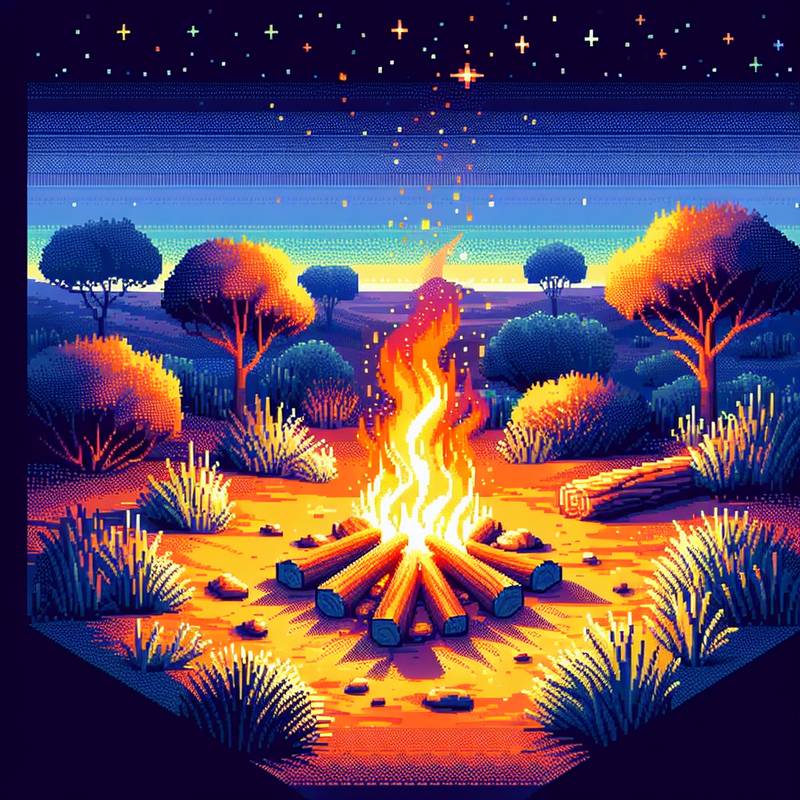 Language is a house whose rooms are lost as they fall empty. One such room: bush telly. An Australian phrase, fading these days, though its meaning is vivid—campfire. The idea that flames, crackling and shifting in patterns older than stories, are a kind of watching. Not entertainment, but attending. Not escape, but stillness.
Language is a house whose rooms are lost as they fall empty. One such room: bush telly. An Australian phrase, fading these days, though its meaning is vivid—campfire. The idea that flames, crackling and shifting in patterns older than stories, are a kind of watching. Not entertainment, but attending. Not escape, but stillness.To call fire a “telly” is to fold the ancient into the modern with a crooked smile, as Australians so often do. It’s not reverent, but it is respectful in its own larrikin way. The campfire becomes a center for quiet, for gathered breath, for the wordless remark at the end of a long day’s track. No need for plot—just the slow unfurling of coals and sky.
Bush telly carries within it the notion that watching doesn’t always demand narrative. Sometimes it asks only patience, and the willingness to sit beside someone, or alone, and let the night do the talking.
Loading...
Bushman’s Clock
 The word “bushman’s clock” once rang through the Australian outback, not with chimes, but with the call of the kookaburra at dawn. Before wristwatches and mobile phones, this raucous laugh was the morning herald for stockmen and drovers alike. They trusted it more than the ticking precision of Swiss mechanism.
The word “bushman’s clock” once rang through the Australian outback, not with chimes, but with the call of the kookaburra at dawn. Before wristwatches and mobile phones, this raucous laugh was the morning herald for stockmen and drovers alike. They trusted it more than the ticking precision of Swiss mechanism. To depend on a bird’s cry is to live in a world tied closely to nature’s rhythms—a culture less preoccupied with control and more concerned with harmony. The phrase, now largely faded from daily speech, reveals how identity once coiled itself around the land’s peculiarities. It implies not wild neglect, but a precise trust in the familiar patterns of a vast and often unforgiving place.
In losing such phrases, we risk forgetting ways of seeing. “Bushman’s clock” isn’t just quaint—it points to an intimacy with the land rarely found in more urban tongues. It suggests that time, to some, was not something to be mastered but observed with attention and respect.
Loading...
Mabo and the Myth of Emptiness
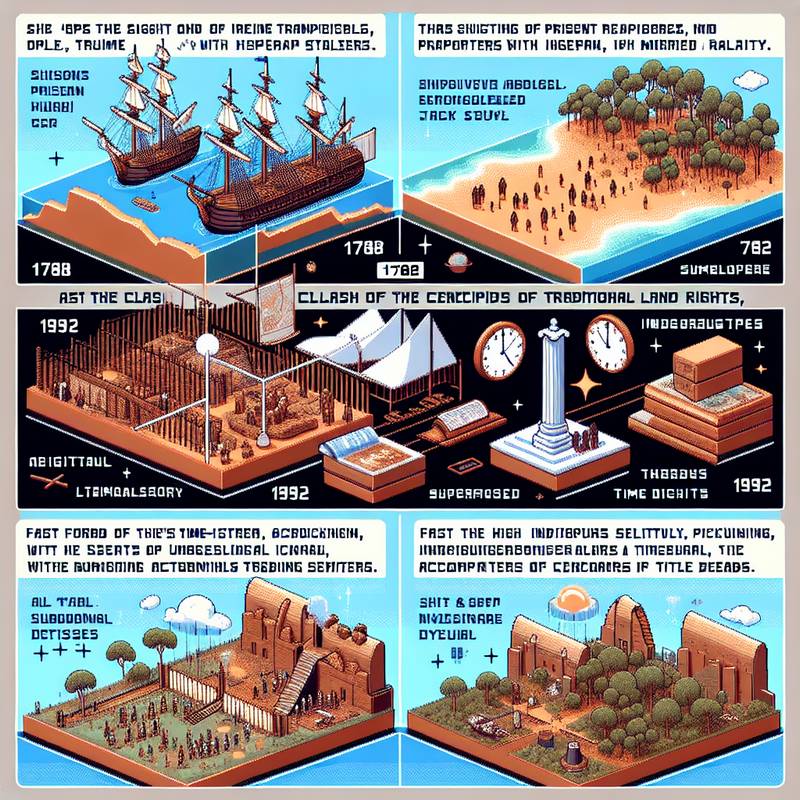 In 1788, they sailed in with penal ships and hierarchical maps in their heads, boots crunching alien soil, the whole continent misnamed and pre-labelled like a file drawer. The Dreaming, that vast and layered cosmology of Aboriginal being, was an invisible reality to them, unparseable—like trying to hear polyphony when you're tuned to monaural logic. The terra was declared nullius, meaning 'Nobody’s,' which is a hell of an ontological broom-sweep. For over two centuries the Indigenous time-stream (stretchy, echolocating, older than pyramids) collided with the colonizers’ metric tick-tock of calendars and clocks and title deeds. Then, 1992: a fissure. The High Court's Mabo decision finally acknowledged traditional land rights—recognition, not as gesture, but as legal reality. A truth both searing and mundane: that people had lived here, had thrived, had named things already.
In 1788, they sailed in with penal ships and hierarchical maps in their heads, boots crunching alien soil, the whole continent misnamed and pre-labelled like a file drawer. The Dreaming, that vast and layered cosmology of Aboriginal being, was an invisible reality to them, unparseable—like trying to hear polyphony when you're tuned to monaural logic. The terra was declared nullius, meaning 'Nobody’s,' which is a hell of an ontological broom-sweep. For over two centuries the Indigenous time-stream (stretchy, echolocating, older than pyramids) collided with the colonizers’ metric tick-tock of calendars and clocks and title deeds. Then, 1992: a fissure. The High Court's Mabo decision finally acknowledged traditional land rights—recognition, not as gesture, but as legal reality. A truth both searing and mundane: that people had lived here, had thrived, had named things already. And in that moment, Australia's timeline cracked open slightly. A brief chance to uncompress centuries of superimposed narrative. But timelines, like rivers, resist straightening.
Loading...
The Past is Over There, Mates
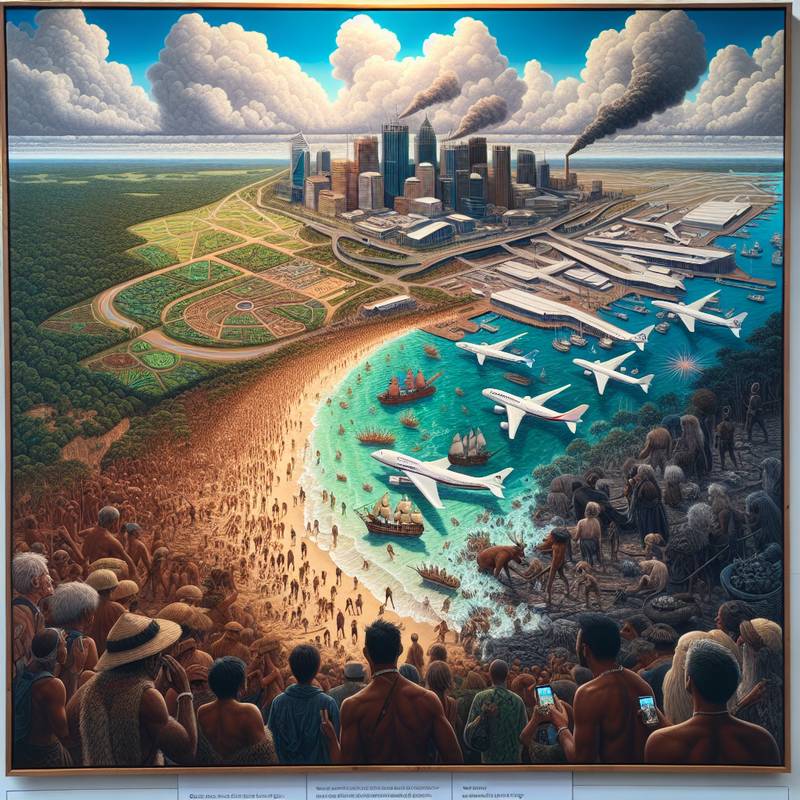 If you stood on Botany Bay in 1788, you would have heard the clink of chains and the squawk of bewildered birds. The First Fleet landed, sailors squinting into the sunlight like lost ghosts. They called it civilization. The local Gadigal people had other names for it.
If you stood on Botany Bay in 1788, you would have heard the clink of chains and the squawk of bewildered birds. The First Fleet landed, sailors squinting into the sunlight like lost ghosts. They called it civilization. The local Gadigal people had other names for it.Now there's an airport. Jumbo jets roar over what used to be sacred ground, throwing shadows on tarmac. We’ve swapped convicts for carry-on luggage and dreams of England for discount Bali holidays. Progress.
Then, people survived off bush tucker—rich with eucalyptus flavors and the knowledge of a thousand generations. Now, the same land serves smashed avocado with a side of phone scrolling. The irony is artisanal.
We build skyscrapers and forget why the land feels heavy beneath them. But the stories are still there, whispering through museum glass or graffiti under an overpass. Ancient customs compressed into QR codes and curated walking tours.
Funny thing about history: it never stops happening. We just change the costumes and start calling it the future.
Loading...
auslistings.org (c)2009 - 2025